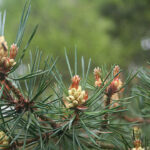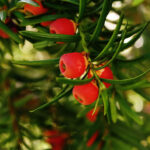
The Christmas Amaryllis: A Festive Bloom with Flair

The Christmas amaryllis is a show-stopping addition to the festive season. With its bold, vibrant colours and elegant presence, it has earned its place as a favourite decoration and gift. This spectacular flower, often found in shades of red, white, and pink, instantly adds a touch of drama and sophistication to any setting. Beyond its beauty lies a fascinating story of how this striking flower became a Christmas classic, steeped in tradition and admiration.
Historical Background
The amaryllis, native to South America—specifically the Andes—has a rich history steeped in horticultural admiration. Introduced to Europe in the 18th century, it quickly gained popularity among plant enthusiasts for its exotic appeal and dramatic blooms. During the Victorian era, the amaryllis found its way into homes as a cherished winter houseplant, becoming a symbol of elegance and taste. Its ability to bloom indoors during colder months made it a perfect fit for Christmas traditions, offering vibrant life during a time when outdoor gardens were dormant.
Over time, the amaryllis became associated with the holiday season, particularly in Europe and North America. Its captivating beauty and ease of cultivation helped it secure a place in the hearts of gardeners and decorators alike. Today, it remains a timeless classic, celebrated not just for its aesthetics but also for its historical and cultural significance.
Botanical Aspects of the Amaryllis
The amaryllis, Hippeastrum spp. belongs to the Amaryllidaceae family, a group of flowering plants that also includes daffodils and snowdrops. Characterised by its tall, hollow stem and large, trumpet-shaped flowers, the amaryllis is a monocotyledon, meaning it has a single seed leaf. Typically, the plant produces two to six flowers per stem, with each bloom lasting several weeks. Its size and structure make it one of the most striking winter blooms.
Amaryllis bulbs are known for their remarkable size and energy reserves, which enable them to produce dramatic flowers. These bulbs require a dormant period before flowering, a feature that makes them ideal for timed blooms during winter. After the flowers fade, the leaves appear and play a crucial role in replenishing the bulb’s energy, ensuring a vibrant display in the following year. This unique growth cycle highlights the amaryllis’s adaptability and enduring appeal.
Why It’s Popular at Christmas
The amaryllis’s popularity during Christmas is no coincidence. Its striking red and white varieties align perfectly with traditional holiday colours, while its impressive blooms provide a dramatic centrepiece for festive decorations. Often displayed on mantels, dining tables, and entryways, the amaryllis brings a sense of grandeur and festivity to indoor spaces.
Its ease of cultivation further cements its status as a Christmas favourite. With proper care, amaryllis bulbs can be coaxed to bloom just in time for the holiday season, offering a welcome splash of colour and life. This makes it an excellent choice not only for experienced gardeners but also for those seeking a low-maintenance yet rewarding plant.
Additionally, the amaryllis has become a thoughtful and meaningful gift, symbolising good wishes, strength, and beauty. It’s a versatile choice that can brighten someone’s day while serving as a lasting reminder of the festive spirit.
The Christmas amaryllis is more than just a seasonal flower; it’s a celebration of beauty, resilience, and festivity. Its vibrant blooms and graceful presence make it a standout feature in holiday décor, while its rich history and botanical marvels add layers of intrigue. Whether adorning your mantelpiece, taking pride of place on your Christmas table, or given as a heartfelt gift, the amaryllis brightens the holiday season with its vibrant charm. Embrace the timeless appeal of the amaryllis and let it bring warmth and joy to your Christmas celebrations.
















